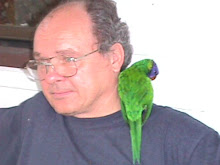We both retain a fond and enduring memory of Chasewater. It was late December, mid-1990s. At the time the older of my two young sisters lived in Brownhills so obviously a trip to visit Anna almost invariably included at least a quick scan, often a longer look, around the reservoir. On this particular occasion there was a howling, near-gale force wind coming in from either the Arctic or perhaps even more distant Siberia. Whichever, the wind chill factor had the mercury plummeting well below zero; it was brass monkeys’ weather. A sheet of ice stretched across the surface, creaking and cracking as it shifted slightly under pressure.
We were parked somewhere close to the sailing club; we didn’t know any better and in those conditions few sailors would have weighed anchor to “Ahoy” a pair of eccentrics scrutinizing a large screech of gulls. There was a small patch of clear water somewhat ahead and slightly to our right – one o’clock to the car bonnet. For obvious reasons a colony of gulls had gathered on this ice-free section.
Also for obvious reasons, Fay and I scanned the birds from the warm comfort of our hired car, viewing through the windscreen. There appeared to be wall-to-wall Herring Gull in various stages of growth development from 1st-year winter birds to adults in full winter plumage.
It was Fay who spotted the one gull among a group off to the side that was different. You have to appreciate that Fay has perfect 20/20 vision and is particularly good at long distances. She can often describe intricate plumage details with the naked eye while we mere mortals race to our binoculars. Birding was a “natural” pastime for Fay to adopt.
Once I had located which of the gulls was “different” I had to agree that it did appear to be unlike its immediate neighbours but from my angle the bow in the windscreen and the choppy air itself made positive identification problematic. There was really no alternative, either we abandoned the attempt to distinguish it from the others and dismissed it as just another Herring Gull in one of its partial plumages or we braved the icy Arctic blasts to take a better look.
But which of us would be the one to leave the warmth of the car, extend the tripod legs, unzip the all-weather casing and focus the scope on the bird to view it at closer quarters? One of us would have to do it. We compromised and I went out.
With rapidly numbing fingertips and cheeks that felt as id they’d be stung by a thousands red-hot pinpricks I managed to home in on the gull but by that time my eyes were streaming rivulets of tears, blurring my vision so that it was impossible to focus on anything but a general amalgamate of white, grey and black; a massive blob of pied bird body. I dived back into the car, dried my eyes, took a deep breath and ventured forth again where only fools and oddball birders would dare to tread – praying that the anomalous gull hadn’t moved from centre scope.
It hadn’t and it wasn’t a Herring Gull. From here at Attlee Crescent, years from the actual incident and miles from my notes back in Nanango, Queensland, Australia, I can’t now recall all the diagnostic features we considered before coming to our joint prognosis [and we can disagree, leaving the bird unclaimed] but certainly the ring around the bill and the prominent eye-ring were foremost.
It was a Ring-billed Gull, Larus delawarensis.
 Given the above you can perhaps imagine how devastated Fay and I were on first sighting the Chasewater of [ 20 September] 2010. We had been warned, at the Chasewater Railway Station where we initially visited for a cup of tea, that owing to remedial work aimed at eventually raising the reservoir water levels there would be a temporary drop in water levels but the spectacle that met our eyes was beyond our wildest dreams – “Dunesque” in its arid proportions. Where water had once lapped the very edge of the carpark wall it now lay two score metres from the edge; where there had been megalitres of water there was now mere thimblefuls. The reservoir appeared as a chronic victim of aquatic cancer overdosed on chemotherapy.
Given the above you can perhaps imagine how devastated Fay and I were on first sighting the Chasewater of [ 20 September] 2010. We had been warned, at the Chasewater Railway Station where we initially visited for a cup of tea, that owing to remedial work aimed at eventually raising the reservoir water levels there would be a temporary drop in water levels but the spectacle that met our eyes was beyond our wildest dreams – “Dunesque” in its arid proportions. Where water had once lapped the very edge of the carpark wall it now lay two score metres from the edge; where there had been megalitres of water there was now mere thimblefuls. The reservoir appeared as a chronic victim of aquatic cancer overdosed on chemotherapy.
There were a few species hanging around, mostly semi-tame waterfowl scournging titbits from the public together with a myriad of hybrid Mallard in all shades of plumage. Other than that I remained impressed only by the humble Rook.



No comments:
Post a Comment